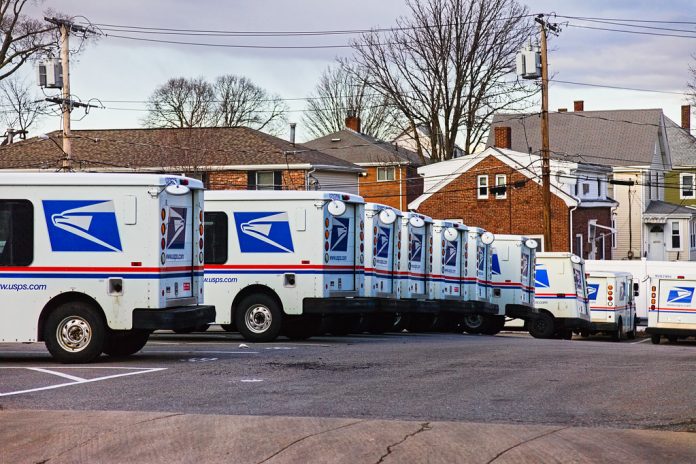Ignoring demands for his capitulation or resignation, Postmaster General Louis DeJoy on February 23 confirmed the U.S. Postal Service (USPS) would not commit to an all-electric vehicle fleet without significant additional federal funding.
Nor would it file a Supplemental Environmental Impact Statement (EIS) concerning its vehicle replacement plan, as Biden Administration officials had demanded.
Environmental Protection Agency (EPA) Associate Administrator for Policy Vicki Arroyo had claimed the USPS’s EIS for its proposal to replace its vehicle fleet omitted essential information regarding the total cost of ownership, underestimated greenhouse gas emissions, failed to consider more environmentally protective feasible alternatives, and inadequately considered impacts on communities with environmental justice concerns.
More EVs requires more billions
DeJoy, a career businessman appointed by former President Donald Trump, inherited an organization that is $206.4 billion in debt and direly in need of new vehicles.
The average age of the 230,000 vehicles in USPS’s delivery fleet is 25 years old, well-beyond their designed useful lives.
In 2021 the USPS agreed in principle to award a contract for the Next Generation Delivery Vehicle program to Wisconsin-based Oshkosh Defense. Under the contract, for which $482 million has already been appropriated, Oshkosh Defense, a century-old manufacturer of military gear, fire trucks, and concrete mixers, would design and produce 50,000 to 165,000 new mail trucks, over the contract’s 10-year life.
The USPS required that at least 5,000 of these be electric vehicles.
In early February, shortly before the contract was to be finalized, the U.S. EPA and the White House Council on Environmental Quality raised objections to the plan, asking the USPS to conduct a new technical analysis and environmental review, and demanding the Service comply with the Biden administration’s executive order directing the federal government to acquire 100 percent zero-emission vehicles by 2035, including 100 percent zero-emission light-duty vehicle acquisitions by 2027.
Need New Trucks Now
The USPS decided against conducting a new analysis, saying electric vehicles were too expensive and would take too long to be built in the numbers needed.
“As we have reiterated throughout this process, our commitment to an electric fleet remains ambitious given the pressing vehicle and safety needs of our aging fleet as well as our fragile financial condition,” said DeJoy in a statement. “But the process needs to keep moving forward.
“The men and women of the U.S. Postal Service have waited long enough for safer, cleaner vehicles to fulfill on our universal service obligation to deliver to 161 million addresses in all climates and topographies six days per week,” said DeJoy.
The new mail trucks will, for the first time have air conditioning and heating, along with 360-degree cameras, advanced braking and traction control, air bags a front- and rear-end collision avoidance system, and increased cargo capacity.
The current fleet has developed a significant risk of engine fires.
DeJoy pointed out that because the contract had built in flexibility, the final number of electric vehicles purchased could increase subject to an additional $3.3 billion infusion of funding from either internal sources or congressional appropriations.
EPA Is Arrogant
The EPA has no place interfering in other agencies purchasing decisions, said Bette Grande, president of the Rough Rider Policy Center.
“It is hard to imagine that members of Congress who passed the enabling legislation in the early 1970s thought that this new federal agency, the EPA, would one day have the power to override purchasing decisions made by the USPS and other federal agencies,” Grande said. “The fact that there is no proven EV technology or a production vehicle that meets the USPS requirements does not deter EPA from its agenda, and cost considerations never factor in for the EPA.
“In rural America, the USPS works primarily through independent contractors who drive their own vehicles,” Grande said. “If EPA can rewrite the USPS contracts, it surely has the authority to require private contractors to convert to EVs.”
Electric vehicles aren’t adequate for the USPS’s needs, said Ben Lieberman, senior fellow at the Competitive Enterprise Institute.
“The reality is that there are still issues with EV trucks and good reason for the USPS to avoid them until these issues are resolved and costs come down,” said Lieberman. “If reducing greenhouse gas emissions from the USPS is a goal, a better idea than expensive electric delivery trucks would be for the USPS to eliminate the favorable postal rates for junk mail.”
Duggan Flanakin (dflanakin@gmail.com) writes from San Marcos, Texas.


























